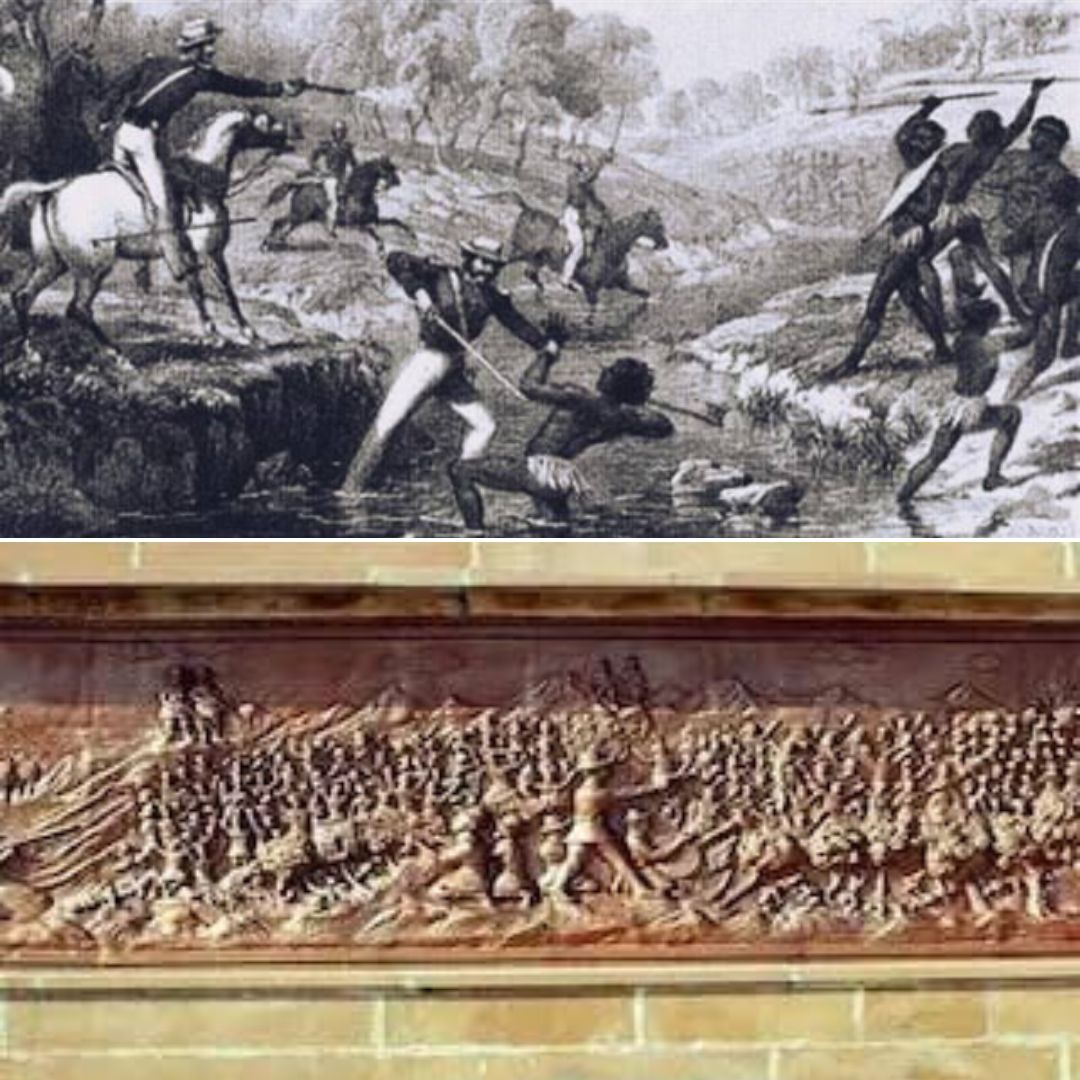Revisiting Forgotten Revolution Of Bhil Tribes & Horrors of Mangarh Massacre
Writer: Laxmi Mohan Kumar
She is an aspiring journalist in the process of learning and unlearning many things. Always up for discussions on everything from popular culture to politics.
India, 3 Nov 2022 10:07 AM GMT
Editor : Jayali Wavhal |
She writes about gender issues, human interest, and environment.
Creatives : Laxmi Mohan Kumar
She is an aspiring journalist in the process of learning and unlearning many things. Always up for discussions on everything from popular culture to politics.
After the Prime Minister directed state governments to give due place to the Mangarh Massacre in Indian history, the revolution that led to the massacre and the historical struggles of the Bhil tribes are being revisited.
Speaking at an event at the Mangarh Dham in Banswara district of Rajasthan, Prime Minister Narendra Modi recounted the tragedy of the Mangarh Massacre that killed over 1,500 Bhils in the region. Talking about the incident, the prime minister said that the Mangarh massacre was not given its due place in Indian history and that "now, the country is correcting the mistake committed decades ago". The incident that took place in November 1913 witnessed the colonial forces kill thousands of Bhils, and it continues to scar the minds of tribal families of Rajasthan.
Reviving Stories Of Valour & Bravery From Tribal Lands
While speaking to the masses who had gathered for the event, the prime minister praised freedom fighter, Govind Guru, at length and mentioned his many contributions to the 1913 revolution. He was quoted saying that great freedom fighters like Govind Guru bravely represented India's tradition and ideals. Along the lines of his revolution, Guru had lost his family but continued on as he believed every villager from the tribe was his family.
Asking the Rajasthan and neighbouring state governments to chart a roadmap for developing Mangarh Dham into a memorial of the tribal uprising, Modi noted that the freedom struggle of the tribals would be given its due place in history.
They had fought valiantly against the Britishers and campaigned for the protection of their tribes and cultures. For the descendants of Bhils and many historians, the Mangarh massacre is considered more gruesome than the 1919 Jallianwala Bagh massacre.
History Of The Mangarh Massacre
The Bhils are a tribal community living in the Maharashtra, Gujarat, Rajasthan and Madhya Pradesh regions, and they historically came under the rule of the princely states and the Britishers. They began serving as bonded labourers by the end of the 20th century and faced several adversities. Added along with this was the great famine of 1899-1900, which took the lives of over six lakh people.
Amidst these tragedies, Govind Guru arose and suggested a set of measures to improve the socio-economic setup in which the tribes existed. Govind Guru himself was a bonded labourer and began the Bhagat Movement in 1908 to address the practices that could uplift the community from their plight.
He asked his supporters to follow vegetarianism, abstain from alcohol, reject bonded labour, and fight for their rights. As the tribals collectively began recognising their rights and changing their practices, many rulers of the princely states started feeling threatened.
In 1903, Govind Guru managed to mobilise and train many Bhils at the Mangarh Hill, on the border of Banswara and Santrampur. Jointly they placed a charter of 33 demands before the British in regard to forced labour, high taxation, and so on. Although the Britishers attempted to placate them, the Bhils vowed to gain freedom.
With the growing unrest and demands for better living conditions, the Britishers and local rulers began plotting against them.
The Mangarh Massacre
Political representatives of the British deployed their forces along with those of Santrampur, Dungarpur, Banswara, and a detachment of Mewar force to move towards the Bhil's camping in Mangarh. An article by the FirstPost quoted from a book on Govind Guru by the Gujarat Forest Department, stating, "Machine guns and cannons used in the attack were loaded on donkeys and mules and brought to Mangarh Hill and neighbouring peaks under the command of British officers."
They fired against the protestors indiscriminately and over 1,500 people, including women and children, lost their lives in the tragedy. Several media reports narrated the horrors of the massacre through memories of the villagers. Virji Parghi of a village in Banswara was quoted saying that his father told him how the British placed 'canon-like guns' on animals and made them swivel in circles while firing so that more people could get killed.
Yet another incident recollected by Var Singh Garasia read, "The killings created such a scare that Bhils stopped going to Mangarh for several decades after Independence." After the incident, Govind Guru was captured and sentenced to life imprisonment. He was released in 1919 owing to good conduct in jail. However, he was banned from entering many of the states where his followers predominantly resided.
While many had forgotten the revolutionary, Mangarh observed an annual fair since 1952 in memory of Govind Guru and his disciples. Furthermore, a University was also established in Godhra as a tribute to his legacy and teachings.
Also Read: Remembering Lala Hardayal Who Started International Movement Against Britishers In India
 All section
All section















